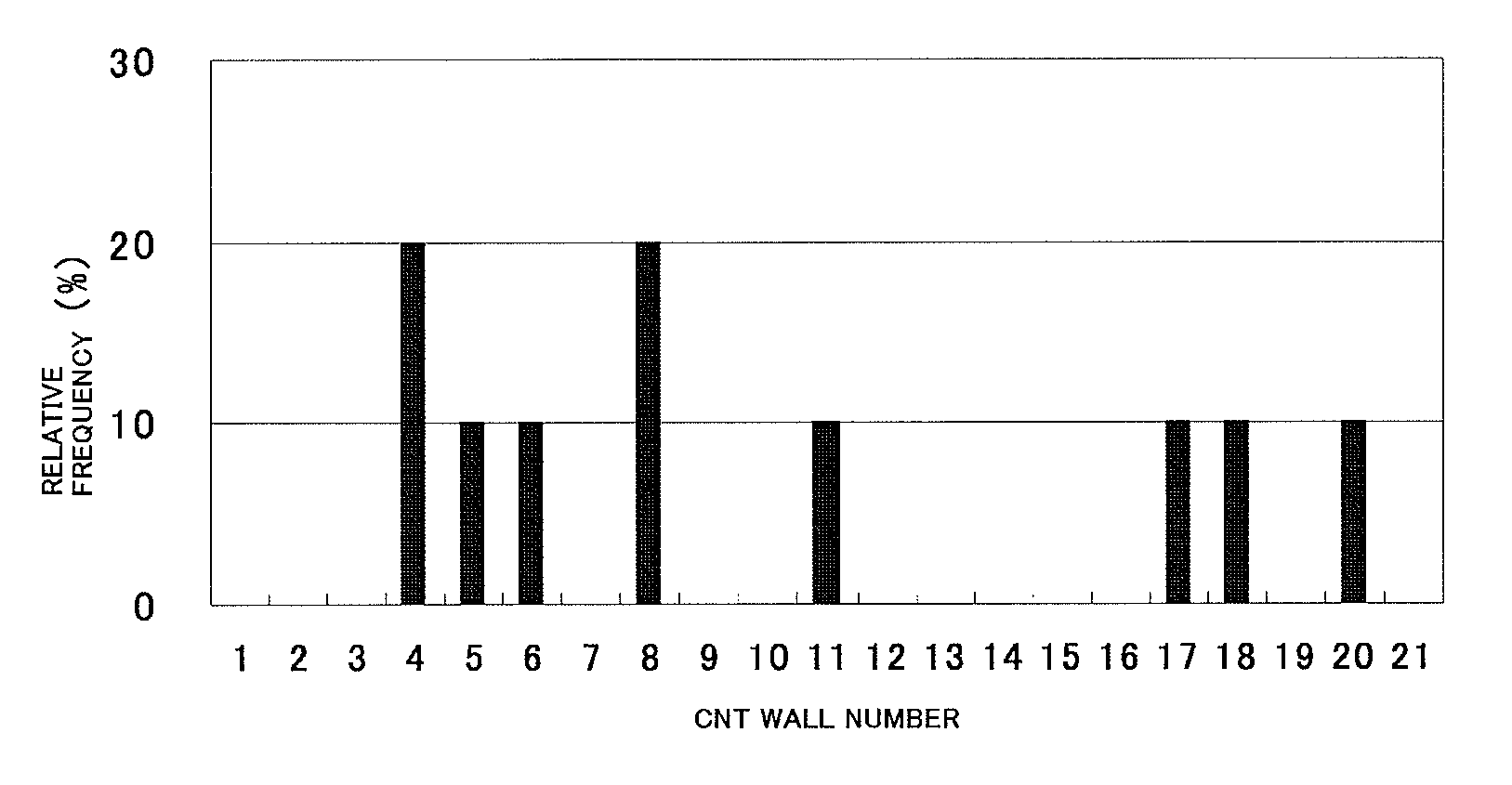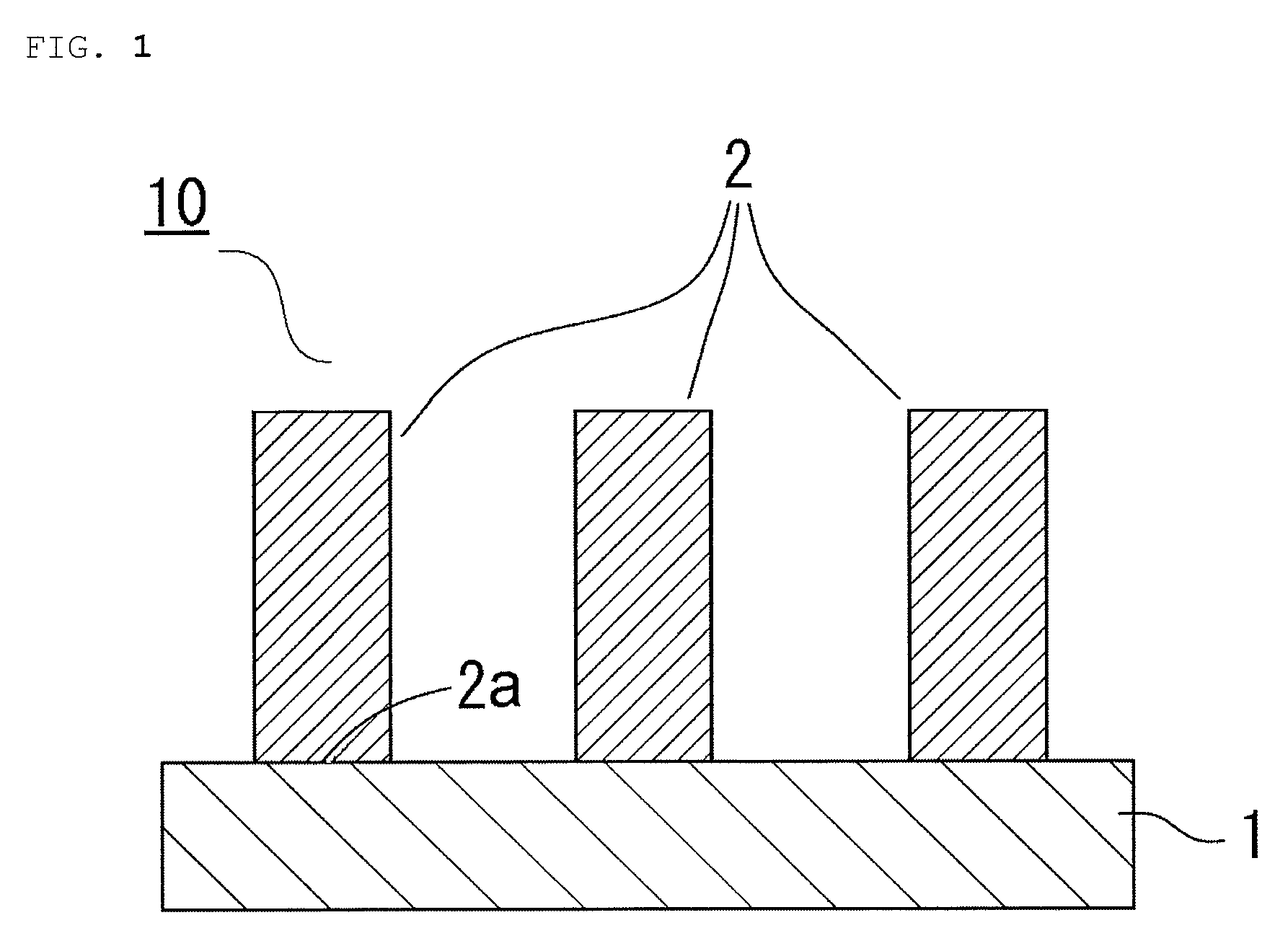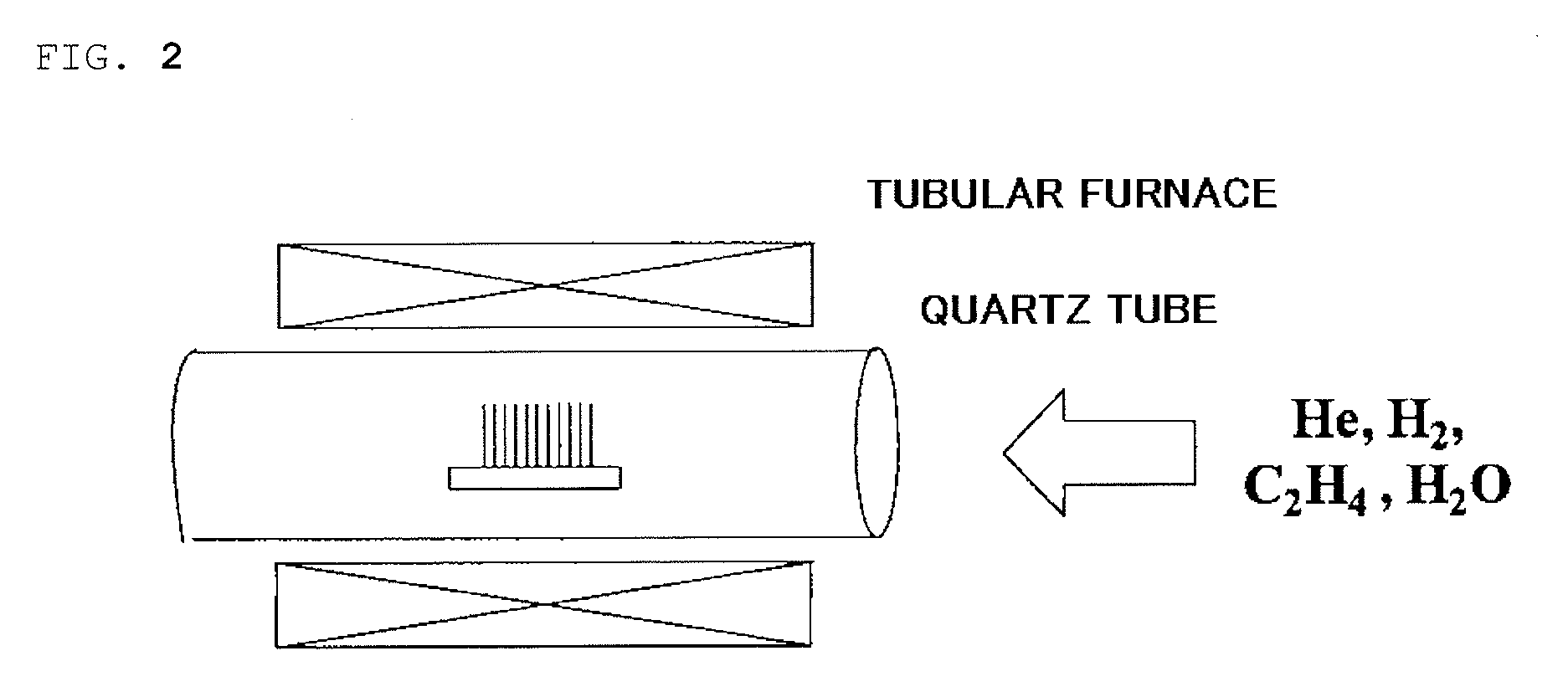Fibrous columnar structure aggregate and pressure-sensitive adhesive member using the aggregate
a columnar structure and aggregate technology, applied in the field of fibrous columnar structure aggregate and pressure-sensitive adhesive member using aggregate, can solve the problems of insufficient length of columnar fibrous structure that can be produced, low adhesive strength, pale adhesive strength of pressure-sensitive adhesive under the condition, etc., to achieve excellent pressure-sensitive adhesive properties, excellent mechanical properties, and high specific surface area
- Summary
- Abstract
- Description
- Claims
- Application Information
AI Technical Summary
Benefits of technology
Problems solved by technology
Method used
Image
Examples
example 1
Production of Carbon Nanotube Aggregate
[0165]An Al thin film (having a thickness of 10 nm) was formed on a silicon substrate having an SiO2 film on its surface (wafer with a thermal oxide film, manufactured by KST, SiO2 film thickness=1 μm, the total thickness of the SiO2 film and the silicon substrate=550 μm) with a vacuum evaporator (manufactured by JEOL Ltd., JEE-4X Vacuum Evaporator). After that, the resultant was subjected to an oxidation treatment at 450° C. for 1 hour. Thus, an Al2O3 film was formed on the silicon substrate. An Fe thin film (having a thickness of 2 nm) was further deposited from the vapor onto the Al2O3 film with a sputtering apparatus (manufactured by ULVAC, Inc., RFS-200). Thus, a catalyst layer was formed.
[0166]Next, the silicon substrate with the catalyst layer was cut and mounted in a quartz tube having a diameter of 30 mm. A mixed gas of helium and hydrogen (120 / 80 sccm) with its moisture content kept at 350 ppm was flowed into the quartz tube for 30 mi...
example 2
[0174]A carbon nanotube aggregate (2) was produced in the same manner as in Example 1 except that a mixed gas of helium, hydrogen, and ethylene (105 / 80 / 15 sccm, moisture content: 350 ppm) was filled into the quartz tube, and then the tube was left to stand for 20 minutes so that carbon nanotubes might be grown on the substrate.
[0175]The carbon nanotube aggregate (2) had a length of 420 μm.
[0176]FIG. 4 illustrates the wall number distribution of the carbon nanotube aggregate (2). As illustrated in FIG. 4, a mode was present at 9 walls, and had a relative frequency of 20%.
[0177]In addition, the distribution width of the diameter distribution of the carbon nanotube aggregate (2), a mode of the diameter distribution, and the relative frequency of the mode were also measured.
[0178]The carbon nanotube aggregate (2) with a base material was obtained in the same manner as in Example 1.
[0179]A shear adhesive strength was measured by using the carbon nanotube aggregate (2) with the base mater...
example 3
Production of Carbon Nanotube Aggregate
[0194]An Al thin film (having a thickness of 10 nm) was formed on a silicon substrate having an SiO2 film on its surface (wafer with a thermal oxide film, manufactured by KST, SiO2 film thickness=1 μm, the total thickness of the SiO2 film and the silicon substrate=550 μm) with a vacuum evaporator (manufactured by JEOL Ltd., JEE-4X Vacuum Evaporator). After that, the resultant was subjected to an oxidation treatment at 450° C. for 1 hour. Thus, an Al2O3 film was formed on the silicon substrate. An Fe thin film (having a thickness of 2 nm) was further deposited from the vapor onto the Al2O3 film with a sputtering apparatus (manufactured by ULVAC, Inc., RFS-200). Thus, a catalyst layer was formed.
[0195]Next, the silicon substrate with the catalyst layer was cut and mounted in a quartz tube having a diameter of 30 mm. A mixed gas of helium and hydrogen (120 / 80 sccm) with its moisture content kept at 350 ppm was flowed into the quartz tube for 30 mi...
PUM
 Login to View More
Login to View More Abstract
Description
Claims
Application Information
 Login to View More
Login to View More - R&D
- Intellectual Property
- Life Sciences
- Materials
- Tech Scout
- Unparalleled Data Quality
- Higher Quality Content
- 60% Fewer Hallucinations
Browse by: Latest US Patents, China's latest patents, Technical Efficacy Thesaurus, Application Domain, Technology Topic, Popular Technical Reports.
© 2025 PatSnap. All rights reserved.Legal|Privacy policy|Modern Slavery Act Transparency Statement|Sitemap|About US| Contact US: help@patsnap.com



